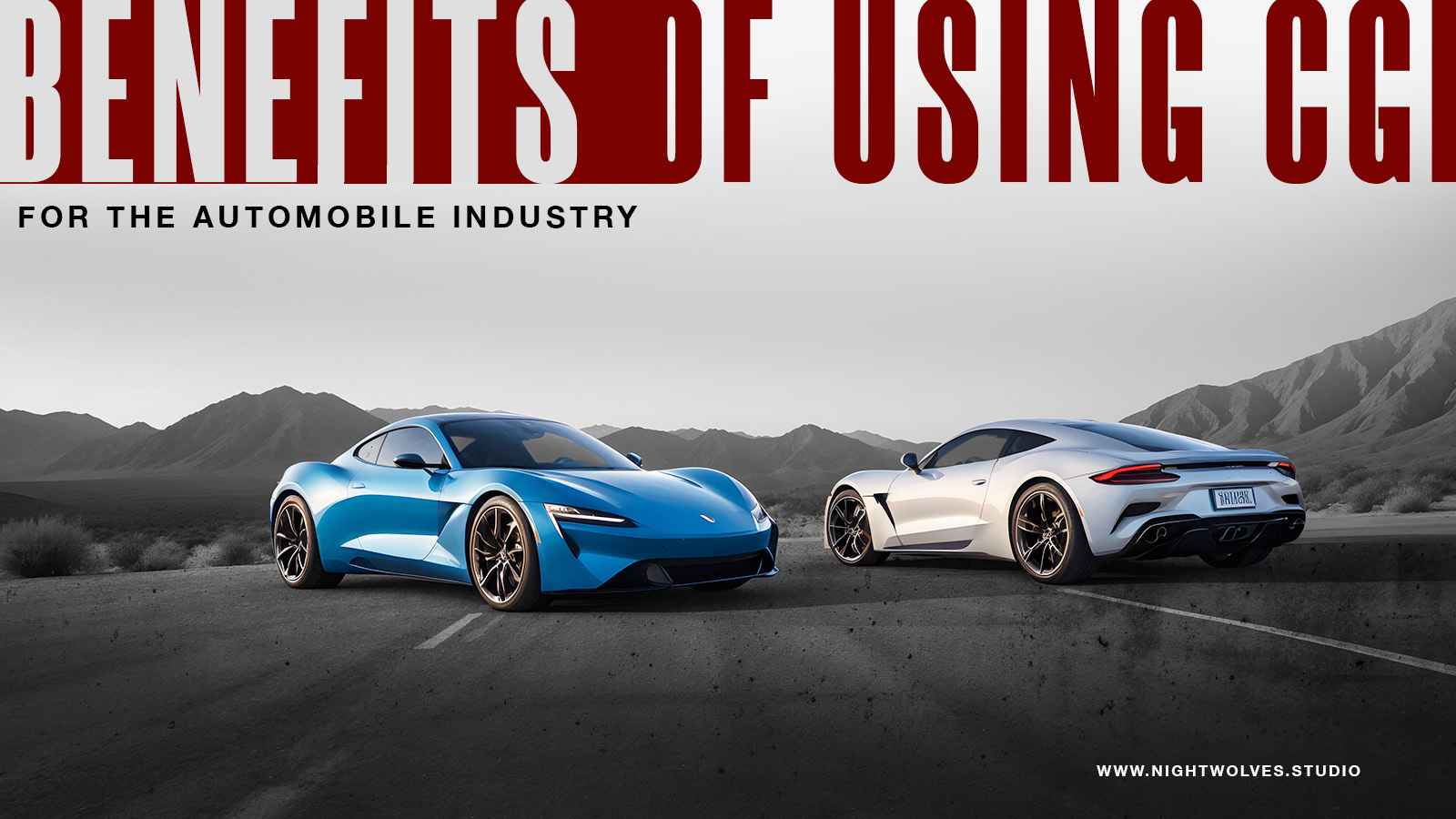Computer-generated imagery (CGI) has become a transformative tool in the automobile industry, revolutionizing how cars are designed, marketed, and advertised. By leveraging CGI, automotive companies can create stunning visuals, streamline production processes, and enhance customer engagement.
Benefits of using CGI in the Automobile Industry.
1. Enhanced Creativity and Flexibility
Creative Freedom: CGI allows automotive designers and marketers to push the boundaries of creativity. Cars can be depicted in any environment, from futuristic cities to otherworldly landscapes, without the constraints of physical locations.
Customizable Visuals: CGI enables the creation of multiple versions of a car in various colors, trims, and configurations. This flexibility allows for highly personalized marketing materials that can be tailored to different markets and customer preferences.
2. Cost-Effectiveness
Reduced Production Costs: Traditional car photography and video shoots can be expensive, requiring physical prototypes, transportation, and location permits. CGI eliminates these costs by creating digital models that can be manipulated and rendered in any setting.
Efficient Resource Use: CGI reduces the need for multiple physical prototypes, saving both time and money. This efficiency is particularly beneficial for startups and smaller companies with limited budgets.
3. Improved Marketing and Advertising
Photorealistic Visuals: Modern CGI technology produces highly realistic images and videos that are often indistinguishable from real-life photography. This realism enhances the visual appeal of car commercials and advertisements, making them more engaging and memorable.
Interactive Experiences: CGI enables the creation of interactive online configurators and virtual showrooms. These tools allow customers to explore and customize cars in real-time, providing a more immersive and personalized experience.
4. Accelerated Design and Development
Virtual Prototyping: CGI facilitates virtual prototyping, allowing designers to create and test digital models before producing physical prototypes. This process accelerates the development cycle and enables rapid iteration based on feedback.
Collaboration and Innovation: CGI technology supports collaboration among design teams located in different parts of the world. Designers can work together in real-time, sharing and refining digital models to achieve the best possible results.
5. Enhanced Customer Engagement
Immersive Visual Storytelling: CGI allows automotive brands to tell compelling stories through visually stunning advertisements. By creating captivating narratives and showcasing cars in dynamic environments, brands can capture the attention of potential customers and build stronger emotional connections.
Virtual Reality (VR) Integration: Combining CGI with VR technology offers customers an immersive experience, allowing them to virtually sit inside a car and explore its features. This innovative approach can drive higher engagement and interest in the brand.
6. Environmental and Sustainability Benefits
Reduced Carbon Footprint: Traditional car shoots often involve transporting vehicles and crews to various locations, contributing to carbon emissions. CGI eliminates the need for such logistics, making it a more environmentally friendly option.
Sustainable Marketing: By using CGI, automotive companies can create marketing materials without the environmental impact associated with physical production processes. This sustainability aligns with the growing consumer demand for eco-friendly practices.
Conclusion
The benefits of using CGI in the automobile industry are manifold, ranging from enhanced creativity and cost-effectiveness to improved marketing and accelerated design processes. As technology continues to advance, the applications of CGI in automotive design and advertising will only expand, offering even more opportunities for innovation and customer engagement.
By embracing CGI technology, automotive companies can create visually stunning, immersive, and personalized experiences that resonate with modern consumers. Whether it’s through photorealistic car commercials, interactive configurators, or virtual reality showrooms, CGI is transforming the way cars are designed, marketed, and experienced.
As the industry continues to evolve, the integration of CGI will remain a key driver of success, enabling automotive brands to stay ahead of the competition and meet the ever-changing demands of the market.
Explore More About CGI, 3D
- Impact of CGI in Modern Automotive AD Campaigns
- Future Trends in Automotive CGI
- Learn How CGI Transforms Automobile Design and Prototyping
- 3D Modeling in Auto Industry
- 3D Product Visualization
People Also Ask
Q: Is CGI used in virtual showrooms for cars?
Ans: Absolutely. CGI is widely used in creating immersive virtual showrooms that allow customers to explore car features, customize models, and view interiors—enhancing the online buying experience without visiting a physical showroom.
Q: Why is CGI cost-effective for car manufacturers?
Ans: CGI eliminates the need for multiple physical prototypes or photo shoots at different locations. With one digital model, manufacturers can generate visuals for brochures, ads, and websites—saving substantial resources

